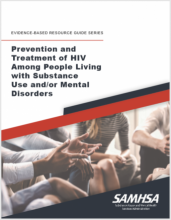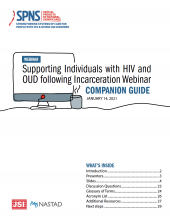
This resource describes how state health departments and other public health organizations can partner with people with HIV and/or who use(d) drugs in programmatic and policy making processes and evaluation.



This resource describes how state health departments and other public health organizations can partner with people with HIV and/or who use(d) drugs in programmatic and policy making processes and evaluation.
Articles in this supplement focus on the global opioid crisis, including coverage of harm reduction approaches, health justice promotion, and lessons learned.
The COVID-19 pandemic resulted in federal policy changes related to telehealth use that allowed states to maximize access to medications for opioid use disorder (MOUD) through telehealth.
Individuals who have HIV who also use drugs experience increased age-matched morbidity and mortality in comparison with those with HIV who do not use drugs.
A recent study published in Drug and Alcohol Dependence found evidence for racial/ethnic disparities in buprenorphine distribution across the United States.
This document provides a quick overview of the federal discretionary funding programs that support essential aspects of the nation’s HIV response.
In recent years, the gap in the rate of opioid overdoses among Black and white Americans has narrowed significantly, with increases in Black mortality driven in part by the addition of synthetic opioids to other drugs.
Achieving the goals of the Ending the HIV Epidemic (EHE) Initiative depends on doing more to strengthen communities, reduce the harm associated with drug use, and prevent disease transmission.
Opioid agonist treatment (OAT) is the provision of medications (methadone and buprenorphine) that activate the opioid receptors to prevent withdrawal and reduce cravings for opioids.
This publication, part of SAMHSA's Evidence Based Resource Guide series, addresses the co-occurrence of HIV and mental illness and/or SUD.